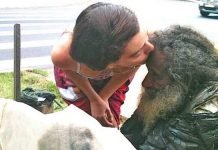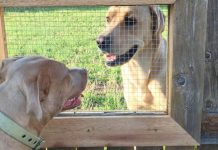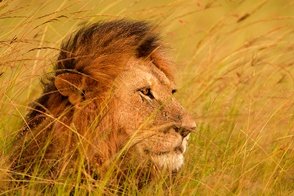Stephen Oachs is an award-winning photographer whose work has graced the pages of many notable publications worldwide, including National Geographic, Popular Photography, Outdoor Photographer, National Wildlife Magazine, among others.
Stephen W. Oachs is an award-winning photographer, successful entrepreneur and technology veteran who began his journey in photography the moment he picked up his first camera.
Completely self-taught, Stephen’s unique and distinctive style has earned him recognition as one of today’s finest nature photographers. He was recognized in 2007 as wildlife photographer of the year by the National Wildlife Federation and was awarded best nature photographer in 2008 by National Geographic.
Stephen has received many other awards and achievements. His work has graced the pages of such notable publications such as National Geographic, Popular Photography, Outdoor Photographer, National Wildlife Magazine and many others.
In 2009 Stephen founded The Aperture Academy, a unique combination of fine art photography gallery in conjunction with in-field workshop instruction and a digital darkroom. Students of the Aperture Academy recieve hands on instruction designed for their individual skill level which includes everything from learning to shoot in the field to digital post processing techniques.
Whether trekking through the wilds of Alaska, enduring the raw challenges of nature or experiencing the thrill of life on the edge, Stephen captures rare and breathtaking moments of light and time. His exceptional eye is filtered only by his passion for life, deep affinity with nature and love of adventure.
Wildlife Photography

“King of the Mara”
The male lion (Panthera leo) is an iconic figure representing power, strength and regal bearing. Considered “The King” of the animal kingdom, the lion’s strong face and unique mane are among the most recognized symbols in human history. With some males exceeding 550 pounds, the lion is the second largest living cat. They live for ten to fourteen years in the wild, however, the males seldom live longer than ten years, due to injuries sustained from continual fighting with rival males. Although the adult male’s heavy and conspicuous mane is a sign of virility and acts as an intimidation display, it can also be a burden, tending to cause overheating during exertion, which is partly why the male lion does not usually bring down prey alone. Instead, they prefer to allow the majority of the hunting to be done by the females and the pride.
In this portrait taken in Kenya, a large male African lion spends a warm afternoon stealthily watching a nearby grazing Impala, while tucked in among the tall grasses of the Serengeti (meaning, “Endless Plains”) grasslands.

“Savanna Baby”
The African baboon, also known as a savanna baboon, is an “old world monkey” and are without tails. One of the largest monkeys, depending on the species, they average from 33 to 80 pounds, and are 20 to 40 inches long. Young baboons are not weaned until they are about a year old, but don’t reach sexual maturity for five to eight years. Young males leave their birth troop before reaching maturity, but the young females stay with their birth group their entire lives. Troops have a hierarchical structure, and members relate extensively through vocal exchanges. Within family groups, there are well-defined positions, determined dominance and individual relations, yet they are known to incorporate dogs into their social groups.
Taken at Lake Nakuru, Kenya, Africa, this alert and precocious baby baboon is estimated to be only a couple weeks old. Its day was spent running around expending a lot of energy, learning about its new world.

“Moose X-ing”
Oxbow Bend, in the Grand Teton National Park, is a prime location to spot wildlife as they make their morning trek from the willow flats, across the Snake River and into the safety and cooler temperatures of the dense forest on Signal Mountain.
This amazing bull moose crossed the river just as the sun rose high enough to provide excellent light for capturing the warm, powerful details of his grand stature.

“The Flying Potato”
The Atlantic Puffin (Fratercula arctica), affectionately called, “The Flying Potato” by Newfoundland natives, has been nicknamed, “sea parrot” because of its bright, oversized beak. Interestingly, the brilliant color of this sea bird’s beak fades to a drab gray during winter months.
Puffins live the majority of their lives in the water. They can be seen resting on the waves or swimming by using their wings in a flying motion underwater. They have webbed feet for superb steering and diving, with the ability to go as deep as 200 feet if needed. On the other hand, on land they are clumsy at best. Though they can fly up to 55 mph once airborne, their landings seem more like a semi-controlled crash, with them often flying a few feet in the air before tucking in their wings and just falling to the ground.
This puffin, filmed in Newfoundland, was content to pose for the camera, proudly showing off his 10″ high stature. They appear to be very proud birds, strutting with their chests inflated and puffed out, as if they are of some great importance. These are magnificent birds with personality to spare.

“Curious Fox”
This friendly-looking Red Fox (Vulpes vulpes) is one of the most recognizable species of foxes. Identified by the red-colored fur, the red fox can be found in almost every habitat in the northern hemisphere. This hardy and prolific species is amazingly adaptive, and has been immortalized by many cultures as a sly, cunning creature.
In this award-winning image, the camera angle was kept low, below the animal’s eye level, in order to remain non-threatening, which also provided a lively, unusual perspective. The curious expression on its face echoes the canid’s playful and curious nature.

“Rocky”
This young North American raccoon (Procyon lotor) is peeking out at the intruder holding the camera, completely oblivious to the temperatures of Montana in January. Considering his very dense undercoat, he doesn’t care how cold it is, however, being nocturnal by nature, he probably isn’t too happy to have his slumber disturbed.
Fortunately, at the moment this photograph was captured, he was bright-eyed, very curious, and making direct eye contact.

“Low Flyer”
This sandhill crane at Bosque Del Apache was flying low at the end of a very cold New Mexico day. His position provided a richly colored backdrop, while a slower shutter speed allowed a slight blurring of his wings, lending further drama and motion to the capture.

“Petrified”
The average Northern Saw-whet Owl (Aegolius acadicus) weighs a mere 5 ounces at maturity, and sports a full wingspan of 16-19 inches. This woodland resident is a night hunter, and a very effective “sit and wait” predator, swooping from low perches, silently and quickly to catch its unsuspecting prey.
Their instinctive defensive posture, when feeling endangered or discovered, is to sit very still and not fly. Often people will mistake their demeanor for being tame, but that is far from the truth. This mature saw-whet is beautifully demonstrating how they can look so tame and gentle, when in reality they are really frozen in place, hoping that if they don’t move a feather, we will just go away.

“Simba”
The African lion (Panthera leo) is the most socially inclined of all the wild felids, generally choosing to live in groups called prides. The pride typically consists of five or six related females, their cubs of both sexes, and one or two males. The males will mate with the adult females, but male cubs are excluded from their maternal pride when they reach maturity.
These predatory carnivores are iconic for their ferocity, bravery and strength. However, as with cats of any size, they can occasionally show a playful side. In this photograph, a young lion cub takes a few moments to play in the tall green savannah grasslands in the Masai Mara, in Kenya, Africa.

“Snowflake”
The Arctic Fox (Alopex lagopus) is well-suited to its native climate, with a lush coat that seasonally changes colors for blending into their terrain. Summer months, their coat is generally dark gray and brown, allowing for camouflage while stalking prey. However, in the wintery months, their luxurious fur becomes the snowy white coat that gives them their name.
Their fur-covered soles, short noses, small ears, thick fur and long bushy tails help them survive in frigid and harsh arctic climates. Their nomadic habits keep them on the move from place to place, always in search of food.
They typically live in burrows, or dens, where the female each spring has a litter of six, to as many as 25, pups. Within their family groups of a male, one or two females and the kits, the second female is often a leftover kit from the year before that does not breed, but helps care for the young.

“Frostbite”
The remarkable Grey Wolf (Canis lupus), is a creature that is feared, revered and beloved in legend, myth and reality. They have acute senses that allow them to easily survive and thrive in the harsh wilderness. Their sense of smell is thought to be almost 100 times more sensitive that a human’s, while their hearing is four to five times better than ours. And though their eyesight isn’t “super human,” it is equally as good as ours.
In this image, an apparently lone wolf stands in the frigid temperatures in Yellowstone National Park on a very early morning, assessing its surroundings. The falling snow and icy landscape don’t seem to affect this beautiful animal, except to show a dramatic contrast between its stunning gaze and the colorless backdrop of winter.

“Tatiana (2003-2007)”
Siberian Tigers (panthera tigris altaica), the largest cat species in the world, are among the most majestic, powerful and elegant creatures on the planet. Tragically, these magnificent cats are endangered, with only 400-500 living in the wild. The tiger in this photograph became famous when she was tragically killed after escaping her enclosure at the San Francisco Zoo. This photo was widely used by the news media, specifically MSNBC.com and other NBC affiliates. In this photograph, Tatiana is crouched — ready to pounce on an unspecting toy. I took this rare moment to capture her strength, beauty and grace. She will be missed.

“Tembo”
African elephants (Loxodonta africana), also known as savanna elephants, are the largest living land animals on earth today, and live in a close, structured social order. The females spend their entire lives in tightly knit family groups made up of mothers, daughters, sisters and aunts. These groups are led by the matriarch, the eldest female. When separate families bond, they will form kinship, or bond, groups. The adult males tend to form alliances with other males or choose to live mostly solitary lives. At birth, an elephant calf typically weighs 230 pounds and they grow to live for 50 to 70 years. Healthy adult elephants have no natural predators, although lions may prey on calves or weakened individuals. They are, however, threatened by human intrusion and poaching.
In Kenya’s native language of Swahili, the word for elephant is “tembo.” A symbol of wisdom, tembo are famed for their memory and intelligence, which is believed to be equal to that of dolphins and primates.
In this photograph, taken in central Kenya, a unique moment of order is captured. The matriarch is respectfully flanked by two younger females, with the baby “leading” the herd. This image depicts the closeness that these family units exhibit, with their protective and nurturing side.

“The Trilogy”
The Snowy Owl (Bubo scandiacus), also known as the Arctic Owl, or Great White Owl, is a beautiful, majestic bird of prey that is well-suited for the cold arctic regions they inhabit, ranging across the northern regions of Greenland, Scandinavia, Russia, Alaska and Canada.
Their feathers have no pigment, leaving more space for air, which is an excellent insulator, helping them to keep warm (and cool) as needed for their climate. The female plumage is more visually decorative, speckled with thin horizontal bars or spots, however, the male’s spectacular plumage is almost purely white.
Snowy owls are known to sit still and silent for long hours, waiting for their prey — with lemmings being a favorite. An adult owl can eat 3-5 lemmings a day (up to 1,600 per year).
This photograph captures a rare occurrence of three females that have amicably perched together. One reason for this cautious tolerance is because the food source is plentiful and there is less competition…for the moment.

“Lobo”
The magnificent Grey Wolf, Canis lupus, is a remarkable creature that has been respected, revered and feared throughout history. This beautiful apex predator, also known as a Timber Wolf, is a very social and loyal animal that mates for life and shares in caring for all the young in its pack.
This mesmerizing photograph captures the intensity and intelligence behind the eyes of this fantastic animal as it stands poised on a boulder outside of Kalispell, Montana.

“Grizzly Gaze”
Yellowstone National Park is a natural habitat for Brown Bears, also known as “grizzlies”. Their nickname dates back to the Lewis and Clark Expedition. Grizzlies (ursus arctos horribilis) are the largest bears in Yellowstone, weighing from roughly 300 to 600 pounds or more. They live 15-20 years in the wild.
This photograph captures a rare look at grizzly behavior. The suspended water beads, tossed around by play “fighting” in a shallow stream, emphasize the intensity of the moment.
This photograph was awarded first place in the 2007 National Wildlife Federation’s annual Contest.

“Six Points of Separation”
The magnificent Wapiti (Cervus canadensis), also known as the North American Elk, is the second largest member of the deer (Cervidae) family. To keep these 700 pound mammals nourished, they eat about 20 lbs. of food each day, consisting mostly of grasses, bark and their favorite munchable, aspen shoots.
This impressive bull was roaming Yellowstone National Park with his harem of about 25 cows. The herd was grazing and foraging its way toward the top of a ridge, and this large male crested the top just as the setting sun became magical, setting him aglow while elegantly highlighting his power and beauty.

“Wary Arctic Fox”
This enchanting arctic fox (alopex lagopus) is well-suited for frigid weather, from its short muzzle and ears, to its furry soled paws and thick, bushy tail. It uses its tail to snuggle under, to guard against arctic winds, and its beautiful fur adapts to the seasons acting as superb camouflage.
This photograph beautifully illustrates the camouflage effect of the winter white fur in the snow. The stance shows the fox is poised to dart away, yet his curiosity holds him in frame for a perfect moment, just long enough to capture those vibrant, piercing eyes staring warily into the camera lens (or at the photographer), making for a dramatic, unforgettable photographic capture.

“The Lookout”
At first glance, this appears to be a photograph of life in a serene Alaskan meadow. Upon closer look, these bears are in an alert posture, and there is a sense of intensity. They’ve just detected danger.
This grizzly sow, known as “Rosie” by the Hallo Bay Wilderness guides, had just called her cubs close, preparing to fight or flee–whatever it would take to protect her twins. Rosie was popping her jaw and making low growling-type warning sounds at “Harvey,” a large grizzly boar, who was entering the meadow and headed in their direction. Boars are known to kill cubs, and Rosie was taking no chances. The moment this photograph captured this scene, she immediately moved her cubs out of the meadow…and after hearing Rosie’s mood, Harvey wisely did not follow.

“Bear Necessities”
The circle of life could not be more evident than when one witnesses a river full of Sockeye Salmon (Oncorhynchus nerka) during their annual spawn, where adult sockeye return to their home streams from the ocean in order to deposit and fertilize their eggs, and die. Just prior to spawning, they will change from the silvery blue of a fresh run fish from the sea, to the vibrant colors you see here.
Brown bears contribute to the great circle, with the ability to eat as many as 20 salmon per day. In this photograph, an Alaska coastal brown bear (Ursus arctos) emerges from the water with a bright red Sockeye salmon — one of many catches he’ll make during a time of year where his mission is to do nothing more than fatten up for the long winter hibernation ahead.

“Busy Bobcat”
The stealthy, elusive and beautiful bobcat (lynx rufus) is so named for its shorter “bobbed” tail. This nocturnal relative of the magnificent Lynx is the smallest of the family, weighing in from 11 to 30 pounds, and measuring 30 to 48 inches long, nose to tail.
Solitary by nature, these fierce hunters stalk in stealth mode, and when ready, leap as far as ten feet to pounce on their unsuspecting prey. This photograph captures a young bobcat in the fraction of a moment between an angry warning and pure feline curiosity.

“BooBoo”
A cute grizzly bear cub plays with a dead fish along a remote river in the heart of Katmai National Park, while mother bear forages on a nearby shore.

“Brainstorming”
The iconic American Buffalo, or Bison (Bison bison), are a rich part of North American history, and efforts continue to preserve this magnificent species. Yellowstone has one of the largest wild, free-roaming herds in the states. Though they appear lethargic and awkward, these grass-grazing mammals will not hesitate to show a bad attitude and chase down anyone who provokes them. They have been recorded to run up to 35 mph, and can easily outrun a human.
These two bulls are displaying aggression, typical in spring. During this threat posturing, if one turns his head sideways, indicating submission, the battle will end here. However, if they continue to clash heads, the fight is on!

“Bullwinkle”
The North American Moose (Alces alces) is the largest of all the deer species. As evident in this photograph, the males, called bulls, are immediately recognizable by their huge antlers, which can spread 6 feet from end to end, their long face and muzzle, and the “bell” that dangles from their throat.
Males bellow loudly to attract mates each September and October. Normally solitary, bulls may come together to battle for mating supremacy. After mating, the two sexes go their separate ways, at which time the bulls lose their antlers until early summer, when the growth cycle begins again.
This image captures the beauty of an Alaskan bull moose standing against an early fall backdrop of tundra brush in Denali National Park. Mating season is just beginning….

“Not-So Wile E. Coyote”
This coyote was in a defensive stance, obviously not happy about being disturbed. The interesting and unusual angle was obtained by standing lower than the animal. He was standing on a small rock formation, and was warning that he was not in the mood to have his portrait taken. This capture was caught as the photographer was backing away, giving the coyote plenty of room!

“Curious Wisdom”
The Barred Owl (Strix varia), also commonly known as a Hoot Owl, is a nocturnal creature by nature, but has no problem hunting before night fall. They will often perch on a tree branch and wait for prey to pass by. Their diet includes small mammals, amphibians and some insects, and are attracted to light because of the insects that gather around it.
Taken at Presqu’ile Provincial Park, Ontario, this curious little owl was caught peeking out from among the shadows of a thick forest of Jack Pine trees.

“American Cuisine”
The grace and strength of the magnificent American Bald Eagle are evident in this dramatic photograph. This image was captured mere seconds after the eagle snatched lunch from the icy February waters at the Kenai Peninsula on the southern coast of Alaska.
In this photograph, the action is richly punctuated by the crystal clear spray and the expanse and position of the powerful wings. The intensity of the bird’s eyes, along with its posture and angle coming off the water, convey the elegant and silent power of this beautiful creature.

“Endangered Beauty”
The incredibly beautiful snow leopard (Panthera uncia) is indigenous to the mountains of Central Asia. Their dense coats and snowshoe-like paws are ideally suited for their cold, dry, rocky native environment. These shy, elusive cats, when fully grown, weigh up to 120 pounds and nose to tip of their very thick, furry tails measure up to 7-1/2 feet long. Sadly, these phenomenal cats are an endangered species.
This photograph was taken on a private reserve in Kalispell, Montana. The black and white palette adds depth and drama to this cat’s intense posture, mesmerizing eyes, and her exquisite spotted coat.
Snow Leopard Photograph is Viewer’s Choice Winner in National Geographic’s 2008 International Photography Contest
“Endangered Beauty,” by acclaimed Fine Art Photographer, Stephen W. Oachs, captures the beauty, stealth and strength of the endangered snow leopard, in a poignant black and white portrait.
San Jose, CA–December 5, 2008–Fine Art Photographer, Stephen W. Oachs, has been filming nature and landscapes for relatively few years, but his quality of work has garnered him many awards and attention. When he heard three of his photographs were selected for the National Geographic 2008 International Photography Contest, he was thrilled. However, nothing compares to the exhilaration of actually winning.

“Predatorial Pursuit”
The Great Horned Owl (Bubo virginianus) is a magnificent night predator whose “hooting” calls have sent shivers down the spines of many. Easily identified by their distinctive horn-like feathered tufts, called plumicorns, these owls are known to inhabit from the Arctic to South America. The pale gray variety are found in Canada.
This marvelous capture was taken in southern Ontario; a rare shot of this nighttime hunter still in predatory pursuit just as the day was beginning. Completely unaffected by the subzero temperature, he effortlessly pursued his target. With devastating strength, he could easily carry off prey several times his own weight. This morning, however, he returned to his nest empty-taloned.

“Curious Grizzly Cub”
During a back country expedition in the remote Hallo Bay region of Katmai National Park, this grizzly cub’s natural curiosity kept him enthralled for a short time, watching the group of photographers out watching him and his fellow grizzlies. However, as this photograph captures so beautifully, the mother sow also watched, but not from curiosity…rather in a protective attitude over her cub.

“Weathered Fox”
The American Red Fox (Vulpes vulpes) is thought to be cunning, curious and sly, with good reason. They have been observed storing food for lean times, using prepared dens of other animals and adroitly adapt to living among populations of humans. Members of the dog family, these agile, alert and hardy creatures weigh up to about 15 pounds, with the males (“dogs”) being larger than the females (“vixens”).
This photograph was taken on a cold, wet day in Hallo Bay, Alaska. The fox was foraging for food along the Hallo Bay beach, wandering along the edge of the surf. The capture was taken at eye level with the fox, giving the scene an intimate perspective.

“Honu”
The green sea turtle, called “Honu” by the Hawaiian people, plays an important roll in the environment and culture.
These turtles, which can weigh up to 400 pounds, are primarily vegetarians. They eat algae or limu (Hawaiian seaweed) that grows underwater on coral reefs and on rocks close to shore. Although sea turtles live most of their lives in the ocean, adult females must return to land in order to lay their eggs. They will migrate up to 800 miles, traveling from their feeding areas near the coast of the main islands to nesting beaches in the northwestern islands.
Hundreds of years ago, millions of sea turtles swam the earth’s oceans. Today, all known species of sea turtles are considered either endangered or threatened.

“Leopard”
The African Leopard (Panthera pardus pardus) is an elusive, agile and stealthy predator. Mostly nocturnal, this smaller member of the Panthera genus is able to take on large prey successfully, mainly due to a massive skull that allows for very powerful jaw muscles. Powerful swimmers and runners, able to reach speeds of 35mph and leap over 20 feet, these magnificent cats are also known for their climbing abilities. It is not uncommon to observe a leopard resting over the carcass of its prey…perched high on a tree branch.
This beautiful young leopard was photographed in Samburu, Kenya, Africa, while warming himself on a rock, basking in the early morning light. While his intimidating gaze draws you into his world, a low, golden sunlight bathes the scene in rich, warm tones that embody this incredible animal.

“Lions of ARTIS”
The majestic African lion (Panthera leo) is a legendary creature, heralded throughout human history for its fearsome power and courage, and is often connected with bravery, loyalty and strength. These beautiful cats reach a length of 4-6 feet, with the tail adding another 2-4 feet, and weigh in at 300-400 pounds. Today, these magnificent animals are a highly threatened species and very near being listed as endangered.
Taken at the Amsterdam Artis Royal Zoo, this photograph suspends time in a stunning capture of action and attitude. This memorable photo paints a picture as alive and vivid as if we had participated in the original moment.

“Lion Love”
An endearing example of how light and composition can tell a story. This photograph captures a tender, almost human, moment between two African lions. Known for their ferocity and formidable strength, this capture portrays another side…a sweet moment, revealing a loving prelude.

“Little Trumpeter”
An African elephant, when born, weighs around 200-250 pounds and stands about 2-1/2 to 3 feet tall. After 22 months of being pregnant, you can imagine an elephant cow is quite ready to deliver her very large “bundle of joy.”
A new calf in the herd gets a great deal of positive, nurturing attention. The members of the herd, which are a tightly knit family unit, will gather around the new arrival and caress and touch it with their trunks, welcoming it to the world. Since a baby is born almost completely blind, this behavior immediately teaches the youngster that it must discover its new world by using its trunk. With their 60 to 70 year lifespan, they have a longer development in their young lives, and rely heavily on their elders to teach, nourish and protect them into young adulthood.
In this portrait of a young elephant and its mother, the little one is enjoying the warmth of a Kenyan afternoon with his mom, exercising the 100,000 different muscles in his trunk…and getting in a little trumpeting practice at the same time.
Source: LensCanvas















































